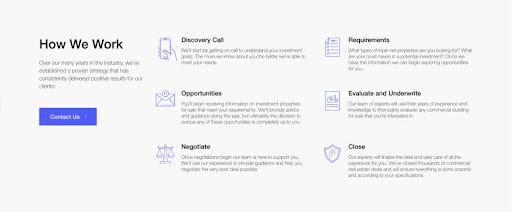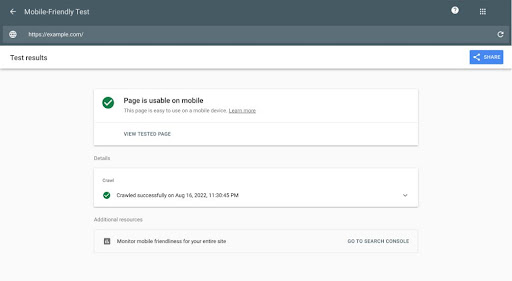Yaro Mamchuk
Yaro Mamchuk is the head UI/UX designer, architect, and CEO of Ternala , a web development and consulting agency that provides services to clients worldwide.
Discover what mistakes people make when redesigning a website and get advice on how to avoid them. Use this guide to redesign your website successfully!
Redesigning a website is quite a challenge. There are many things to take into account – from website's overall design to layout of each page to the content you include on your site. However, it's worth noting that even a single mistake made during the redesign process could negatively impact your business.
In this article, we'll talk about 10 of the most common mistakes people make when redesigning their websites and suggest ways to avoid them! This piece aims to help you avoid making costly mistakes during your next website redesign.
Before you even start the redesign process, you need to take a step back and define the purpose of the redesign. What are your goals for the redesign? What do you hope to achieve? By answering these questions, you'll be able to determine the direction of your redesign and ensure that you stay on track during the whole process.
Some common goals for website redesigns include:
If the purpose for your redesign is not clearly defined, it will be difficult to measure whether or not the redesign was successful once it’s complete. Take a look at ReliaHomeBuyers landing page, how they have redesigned a webpage that is minimalistic, condensed, and informative.

A common mistake people make when redesigning their website is focusing too much on aesthetics and not enough on functionality. Good looks don't ensure it’s easy to use or that the website will achieve your business goals.
When you’re attempting website redesign, make sure you keep the user experience in mind. How convenient can people find what they’re looking for on your site? Can they easily navigate from one page to another? Is the checkout process straightforward?
If you’re unsure how to assess the user experience of your website properly, you can always hire a UX designer to help. General advice is to focus on function over form. As long as your website is easy to use and accomplishes your goals, the aesthetics can always be improved later.
Another mistake to avoid during a website redesign is making changes without user feedback. Just because you think something will be better doesn’t mean it actually will be. The best way to find out is to ask your users!
There is several different ways you can gather user feedback:
Making changes to your website without user feedback is a recipe for disaster. Don’t make assumptions about what your users want or need – ask them directly!
A website redesign can take a few weeks to several months, depending mainly on the size and complexity of the site. If you try to rush through the redesign process, it’s likely that things will get overlooked and that important details will be forgotten. This can lead to broken links, missing images, and incorrect information.
Creating a strategy for the redesign can prevent you from many setbacks and will allow you to finish the process in time. When planning your redesign, give yourself enough time to complete the following tasks:
Don’t underestimate how long the redesign process will take – plan ahead and give yourself enough time to complete all of the steps. It’s much better to take a little bit more time and do it right than to try to hurry and end up with a mess!
A common mistake one can make when redesigning their website is creating too much or too little content. The balance between the two is paramount – you don’t want your website to be so empty that it looks unfinished, but you also don’t want it to be so crammed full of text that it’s overwhelming.
Keep your pages focused on one topic and use short, concise sentences. If you have a lot of information that you want to include, consider breaking it up into smaller chunks or using lists to make it easier to digest.
Content should be SEO optimized. An SEO keyword analysis should be performed, and an appropriate list of keywords must be chosen and used organically on your website. A good SEO specialist will choose the necessary amount of keywords, and then a copywriter should write a text of the appropriate length and use all the keywords in it to achieve the best results.
Remember, less is often more when you're doing web content. Each piece of text content has to be condensed so it stays interesting and informative. You don’t have to include everything there is – just focus on the essentials, keep the text simple, and use appropriate keywords.,
Here is an example of a focused landing page with just enough content for users and search engines. The text is accompanied by minimalistic pictograms, and all the necessary keywords are used. There is also a highlighted call to action button that is very easy to see. The whole page focuses on getting the user to contact the company, and it does its job well.
Look at how Purchasennn put together its service offering with proper descriptions on its homepage.

If you’re a business owner, then chances are you want your website to generate leads. But, if you’re not careful, your website redesign could actually end up harming your lead generation efforts.
Here are a number of things to keep in mind if you want your website to be effective at generating leads:
If you’re not careful, your website redesign could actually end up harming your lead generation efforts. So don’t forget to consider lead generation when planning your redesign.
The next mistake during a website redesign is ignoring browser compatibility issues. Just because your site looks great in Chrome doesn’t mean it will look good in other browsers! It’s important to test your website in all major browsers (Chrome, Firefox, Safari, Edge, etc.) to ensure everything works as it should. Otherwise, you could end up alienating a large portion of your audience. So, take the time to test your site in all major browsers before launching your redesign. It’s worth the extra effort to make sure everyone can enjoy your new website!
Mobile compatibility is another important issue to consider. The number of phone and tablet users is increasing rapidly. It’s essential that your website looks good on these devices. If your website isn't mobile-friendly, you could end up losing a lot of potential customers. It'll be good to test your site on mobile devices before launching your redesign. You can test if your website is mobile-friendly with external tools.

If you have social media buttons on your website or if you’re using any third-party services (like Google Maps or an events calendar), then it’s important to make sure those links and integrations are updated before launching your redesign.
Otherwise, you could wind up with broken links and missing information – neither of which is good for your users! So, take the time to update all of your social media links and third-party integrations before launching your redesign.
Another reason for updating links is SEO. Properly implemented links are very important for ranking. If you have old links on your website, they could be hurting your search engine ranking. So, updating those links as part of your redesign is a good idea.
Check if your buttons and links work correctly by hovering the cursor over them and checking the link in the screen's bottom left corner. Updating social media links and other third-party integrations may seem like a small task, but it’s an important one! Don’t forget to take care of it before launching your redesign.
Look at TheNextScoop and how they have made buttons and links work correctly:

Usability tests are an integral part of the website design process, but unfortunately, they’re often overlooked. If you don’t conduct usability tests on your website, you could end up with a difficult design to use and navigate. By conducting usability tests, you'll be able to ensure that your redesigned website is easy to use and navigate.
Conducting usability tests can be intimidating, but ensuring your website is easy to use is worth the effort. Here we give you some tips on how to do it:
So, before you launch your redesigned website, take the time to conduct usability tests with a few different users. This will help identify potential problems with your design and ensure your website is as user-friendly as possible.
The final mistake we want to point out is that people underestimate the costs involved with a website redesign. Website redesigns can be expensive, so it’s essential to have a realistic budget before starting the process.
When calculating the cost of a website redesign, there are a few things you need to take into account. First, you must decide how much of your website you want to redesign. If you’re just redesigning the home page, your costs will be much lower than if you’re redesigning the entire site.
Then, you need to decide what type of redesign you want. If you’re just making minor changes, your costs will be lower than if you’re making major changes. And finally, you need to factor in the costs of any additional services you may need, such as web design or development services.
So, how do you calculate the cost of your website redesign? Here’s a simple formula:

This formula will estimate how much your redesign will cost. This is just an estimate – the final cost may be higher or lower depending on your specific needs. If you’re ready to start planning your website redesign, use this formula!
If you don’t have a realistic budget, you could end up overspending on your redesign, which can become a burden for your business. So, make sure you have a realistic budget before starting the redesign process.
Website redesigns can be a great way to refresh your site and give it a new look. However, people make several common mistakes when redesigning their websites. By avoiding these mistakes, you can ensure that your redesign goes smoothly and that you’re satisfied with the final result. Remember to do your own research, and you may find even more tips on how to design your website.
The main points are to start small, involve users in the testing process, use various methods, keep track of results, and have a realistic budget and timeframe. By following these tips, you can avoid common redesign mistakes and end up with a successfully redesigned website that you’re happy with.
You’ll also receive some of our best posts today

Yaro Mamchuk is the head UI/UX designer, architect, and CEO of Ternala , a web development and consulting agency that provides services to clients worldwide.

Mobile devices have become an integral part of our lives in this digital...
Don’t miss the new articles!